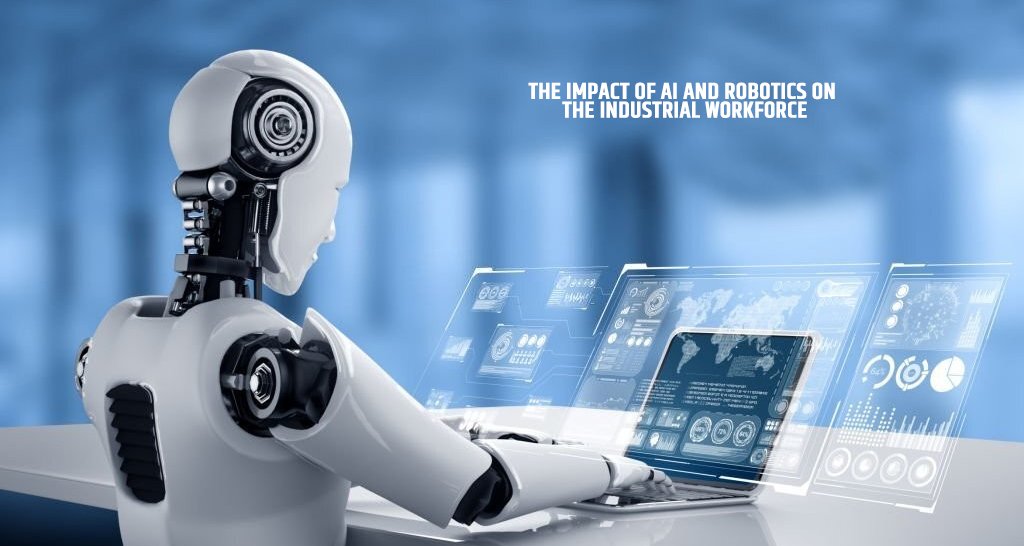Introduction to AI and Robotics in Industry
Artificial Intelligence (AI) and robotics have emerged as transformative forces within the industrial sector. AI refers to the capability of a machine to imitate intelligent human behavior, enabling systems to learn, reason, and adapt. In parallel, robotics focuses on the design and use of robots for specific tasks, often automating processes that were traditionally performed by humans. Together, these technologies have revolutionized productivity, efficiency, and accuracy in manufacturing and various other industries.
Technological advancements in AI and robotics can be attributed to breakthroughs in machine learning, data analytics, and sensor technology. These innovations have resulted in smart machines that not only execute repetitive tasks but also learn from their environments, making them increasingly autonomous. The integration of AI algorithms with robotic systems enhances decision-making capabilities and allows for real-time data processing, significantly improving operational workflows.
The trend toward automation is particularly pronounced in industries such as automotive manufacturing, electronics, logistics, and healthcare. Each of these sectors has witnessed a shift towards greater reliance on AI and robotics to meet rising demands for efficiency and output quality. For instance, automotive firms utilize robotic arms for precision assembly, while logistics companies deploy autonomous vehicles for transportation and distribution tasks.
As organizations embrace automation, they are also experiencing a merging of traditional workforce roles with advanced technology. This shift raises important questions about the future of employment in industries adapting to AI and robotics. Ultimately, understanding these technologies’ roles will be crucial in navigating the social and economic implications of their widespread adoption within the industrial landscape.
Benefits of AI and Robotics for the Industrial Workforce
The integration of AI and robotics into the industrial workforce has led to numerous benefits that significantly enhance operations and worker experiences. One of the most notable advantages is the substantial increase in productivity. Robotics systems can perform repetitive tasks with remarkable precision and speed, allowing human workers to focus on more complex and intellectually stimulating activities. For instance, automotive manufacturers such as Ford and Tesla have utilized industrial robots in their assembly lines, resulting in higher production rates and reduced errors, ultimately leading to time and cost savings.
Another critical benefit of AI and robotics is the improvement in workplace safety. Automated systems can take over hazardous tasks, thus minimizing the risk of injuries associated with manual labor. Industries that require heavy lifting, such as construction and logistics, have witnessed a decline in workplace accidents due to the adoption of robotic equipment. Companies like Amazon have incorporated robotic systems in their warehouses, enabling safer environments for their employees while efficiently handling goods and inventory management.
Moreover, the implementation of AI technologies contributes to enhanced job satisfaction among workers. By relieving employees from monotonous and repetitive tasks, these technologies allow individuals to engage in more meaningful and creative roles, leading to job enrichment. For example, firms like Siemens have integrated AI solutions that augment the capabilities of their workforce. Employees are empowered to analyze production data and make informed decisions, which not only boosts morale but also fosters a culture of innovation.
These benefits underscore the transformative impact that AI and robotics have on the industrial workforce, signaling a shift toward more efficient, safer, and rewarding work environments. As industries continue to evolve, the collaboration between humans and machines is poised to redefine the future of work.
Challenges and Displacement Concerns
The advent of artificial intelligence (AI) and robotics has undoubtedly revolutionized the industrial landscape. However, it has also brought forth a myriad of challenges, particularly concerning job displacement. As technology becomes increasingly capable, industries are deploying automated systems to enhance efficiency and reduce costs. This shift raises pressing concerns about the future of the workforce, with many fearing that traditional jobs may be rendered obsolete.
Job displacement primarily affects low-skilled workers, who often find themselves replaced by machines that can perform tasks more quickly and accurately. According to a report by the World Economic Forum, it is estimated that by 2025, 85 million jobs may be displaced as machines take over routine tasks. This alarming statistic highlights the urgent need for workers to reskill and adapt to the evolving job market.
Moreover, the skills gap poses another significant challenge. With the rapid advancement in AI technologies, there is a growing disparity between the skills possessed by the current workforce and those required in modern industries. A study by McKinsey suggests that by 2030, up to 375 million workers globally will need to transition into different occupations or acquire new skills due to automation trends. This transition requires systematic approaches from both industries and educational institutions to ensure a smooth adaptation process.
Concerns related to security and ethical implications also accompany the integration of AI and robotics in workplaces. Issues such as data privacy, algorithmic bias, and the potential for increased unemployment can lead to significant societal repercussions. Experts emphasize the need for responsible development and deployment of these technologies to mitigate unintended consequences. Balancing innovation with ethical considerations presents a critical challenge for businesses, policymakers, and society as a whole.
As we contemplate the rapid changes brought about by AI and robotics, it is crucial to engage in a comprehensive dialogue surrounding these challenges. Addressing job displacement, bridging the skills gap, and ensuring ethical practices will be vital in navigating the complexities of an increasingly automated workforce.
Future Directions and Workforce Adaptation
The industrial workforce is at a crucial juncture as artificial intelligence (AI) and robotics continue to redefine operational processes. The integration of these technologies not only enhances productivity but also necessitates a profound shift in workforce skills and job roles. As we look towards the future, companies and employees must prioritize reskilling and upskilling initiatives to stay relevant in an evolving landscape.
Workforce adaptation will hinge on the collaborative efforts between educational institutions and industries to develop training programs tailored to meet the demands of new technologies. Fostering a culture of lifelong learning is paramount, allowing workers to navigate the complexities brought forth by AI and robotics. This educational evolution should focus on skills that complement technological advances, such as advanced problem-solving, emotional intelligence, and critical thinking, which cannot easily be replicated by machines.
Moreover, new job opportunities may arise as traditional roles transform. For instance, roles in AI system maintenance, robotic programming, and data analytics are expected to grow. These positions will require workers to engage with technology in novel ways, fostering the development of hybrid skill sets that blend technical knowledge with human-centric capabilities. Industries will need to proactively identify and cultivate these emerging roles to ensure a smooth transition for their workforce.
Looking ahead, it is likely that the industrial workforce will become more dynamic and integrated with technology. Workers will play a vital role in guiding AI and robotics to perform optimally and ethically, thus redefining job descriptions and tasks within organizations. By embracing change and being proactive in adaptation strategies, both companies and their employees can thrive amidst this technological revolution.



